Perfect Thyme Every Time – Your Comprehensive Thyme Growing Manual
Want low maintenance and big flavor? Thyme thrives on neglect and tastes like nothing else. Here's the step-by-step guide to growing this wonder herb.
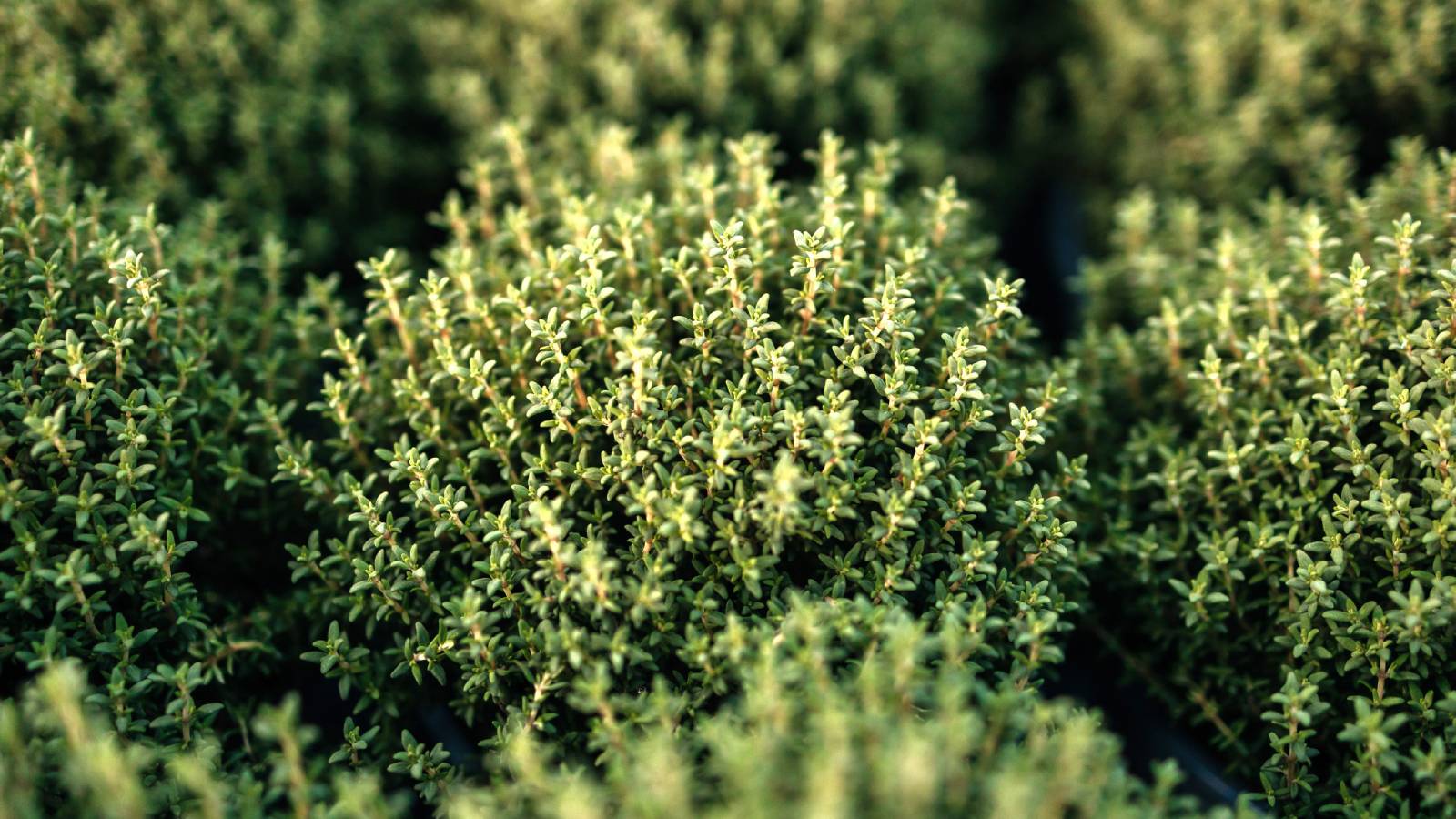

Thyme is beloved by gardeners and cooks alike, prized for its one-of-a-kind flavor and smell, showy flowers, and extreme resiliency. Common garden thyme (Thymus vulgaris) is the one you're most likely to encounter at the grocery store, but there are over 300 other varieties, all with their own benefits. Creeping thyme is a particular favorite among lawn alternative enthusiasts. If you're not already growing it, you should be!
Thyme is an exceptionally forgiving herb, as long as you meet its basic requirements, which more or less come down to good sun and even better drainage. This guide will walk you through everything you need to know to successfully grow thyme. We'll cover planting, essential care, varieties, harvest, and much more. There's even a quiz at the end!
Quick Thyme Facts
Botanical Name | Thymus vulgaris (common thyme) |
Type | Perennial herb |
Height | 6-12 inches (15-30 cm) |
Spread | 6-12 inches (15-30 cm) |
Light | Full sun |
Soil | Well-draining, sandy, low in nutrients |
Hardiness zones | USDA zones 5-9 (Not in the US? Convert your growing zone) |
Flowers | Tiny; pink, purple, or white |
Native range | Southern Europe |
Planting
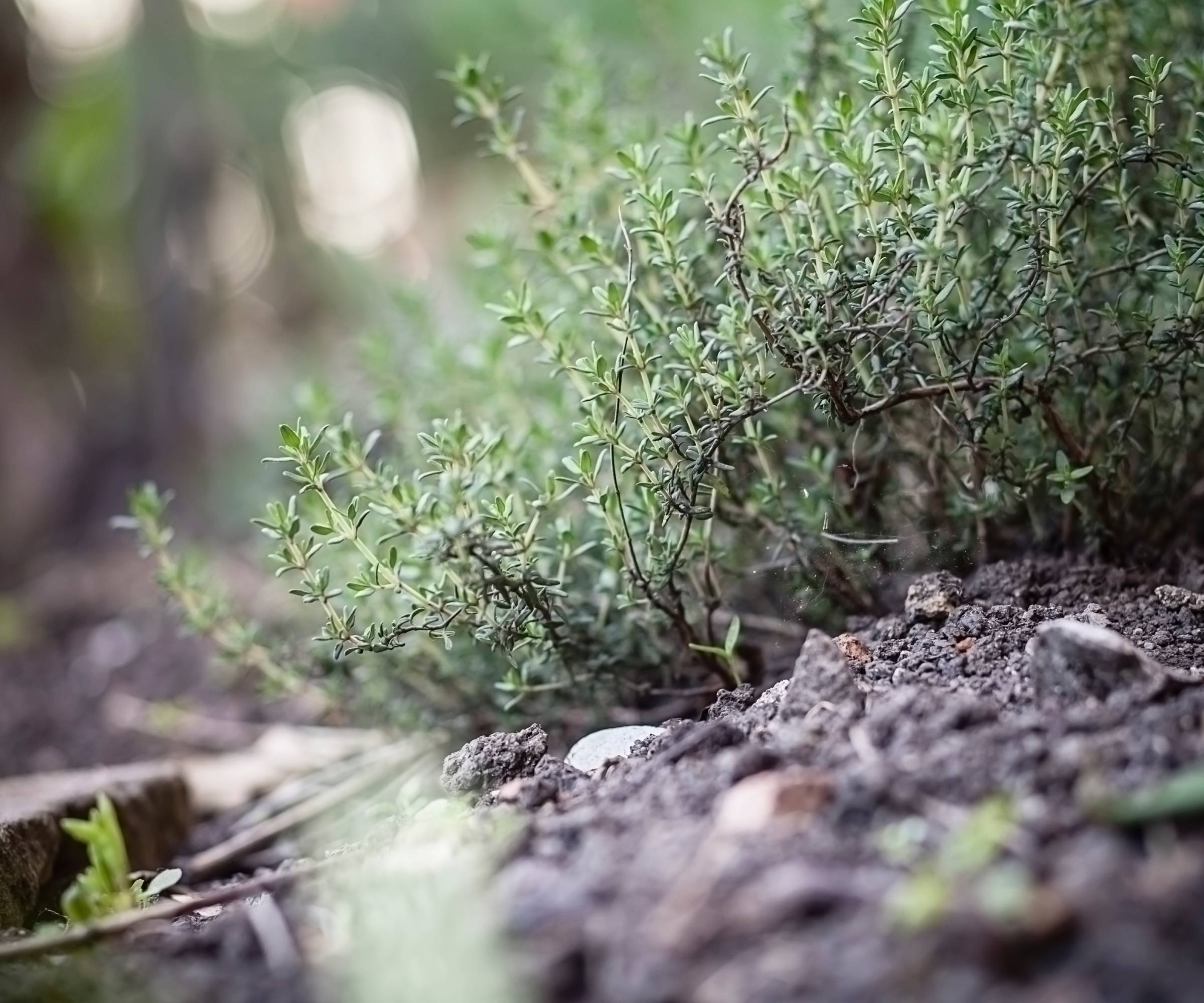
Before you set out to plant your thyme, find the perfect spot that meets its soil and light needs.
Soil
Thyme hates having wet feet. If you get only one thing right about thyme’s soil requirements, it’d better be drainage. The soil should be light, sandy, or rocky, mimicking its natural habitat on the Mediterranean coast. If your garden soil is heavy or clay-based, amend it with coarse sand, grit, or perlite to improve drainage. You can get a bag of perlite from Home Depot for next to nothing.
Thyme actually prefers poor soil, so avoid adding compost or fertilizer, especially anything rich in nitrogen. This may result in a lush, leafy plant, but a bland, mild flavor.
Thyme can tolerate a wide range of pH, but it prefers soil that is slightly alkaline, between 6.0 and 8.0.
Light
This sun-loving herb needs at least 6-8 hours of full sun a day. Without sufficient light, thyme can become leggy and lose both its compact shape and potent fragrance. In shadier gardens, consider growing thyme in containers that can be moved to sunnier spots. If you're growing it indoors, you may want to consider a grow light.
Sign up for the Gardening Know How newsletter today and receive a free copy of our e-book "How to Grow Delicious Tomatoes".
How to Plant Thyme, Step-by-Step
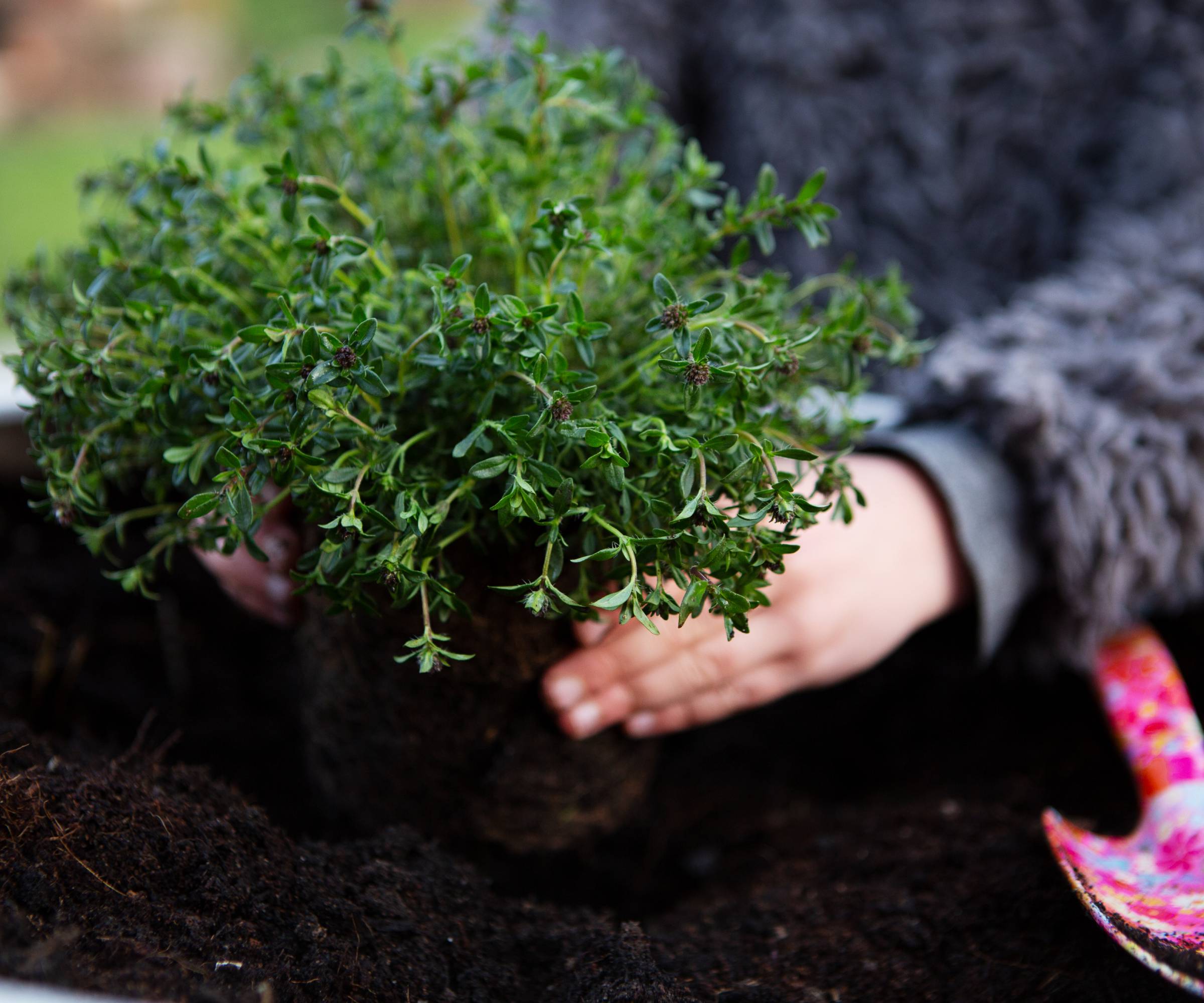
Planting thyme is simple, but a few extra steps can help it get established successfully:
- Choose the right spot: Pick a location that gets full sun and has excellent drainage.
- Prepare the soil: Loosen the soil to at least 6 inches (15 cm) deep. If your soil is heavy, mix in sand or grit.
- Space appropriately: Space thyme plants 12 inches (30 cm) apart to allow for good air circulation.
- Dig and plant: Dig a hole slightly larger than the root ball. Gently remove the plant from its container. (Don't disturb the roots! Thyme roots are delicate). Set it into the hole at the same depth it was growing in the pot.
- Backfill and firm: Fill in around the roots with soil.
- Water lightly: Water just enough to settle the soil.
Don't limit yourself to cultivated garden beds. Thyme can also be tucked into crevices in rock walls, garden steps, or gravel pathways where other plants might struggle. Creeping thyme works especially well in these spaces – its roots will find their way into the cracks, while the foliage and flowers will spill out around them.
Transplanting
Thyme transplants best in early spring or fall, when temperatures are mild. Be careful when removing thyme from its container – its roots are delicate and easily disturbed. Ensure the new site has good drainage and full sun, and water only occasionally, just until the plant is established. If you're moving a plant from one bed to another, lift it with as much root ball intact as possible to minimize shock.
Care
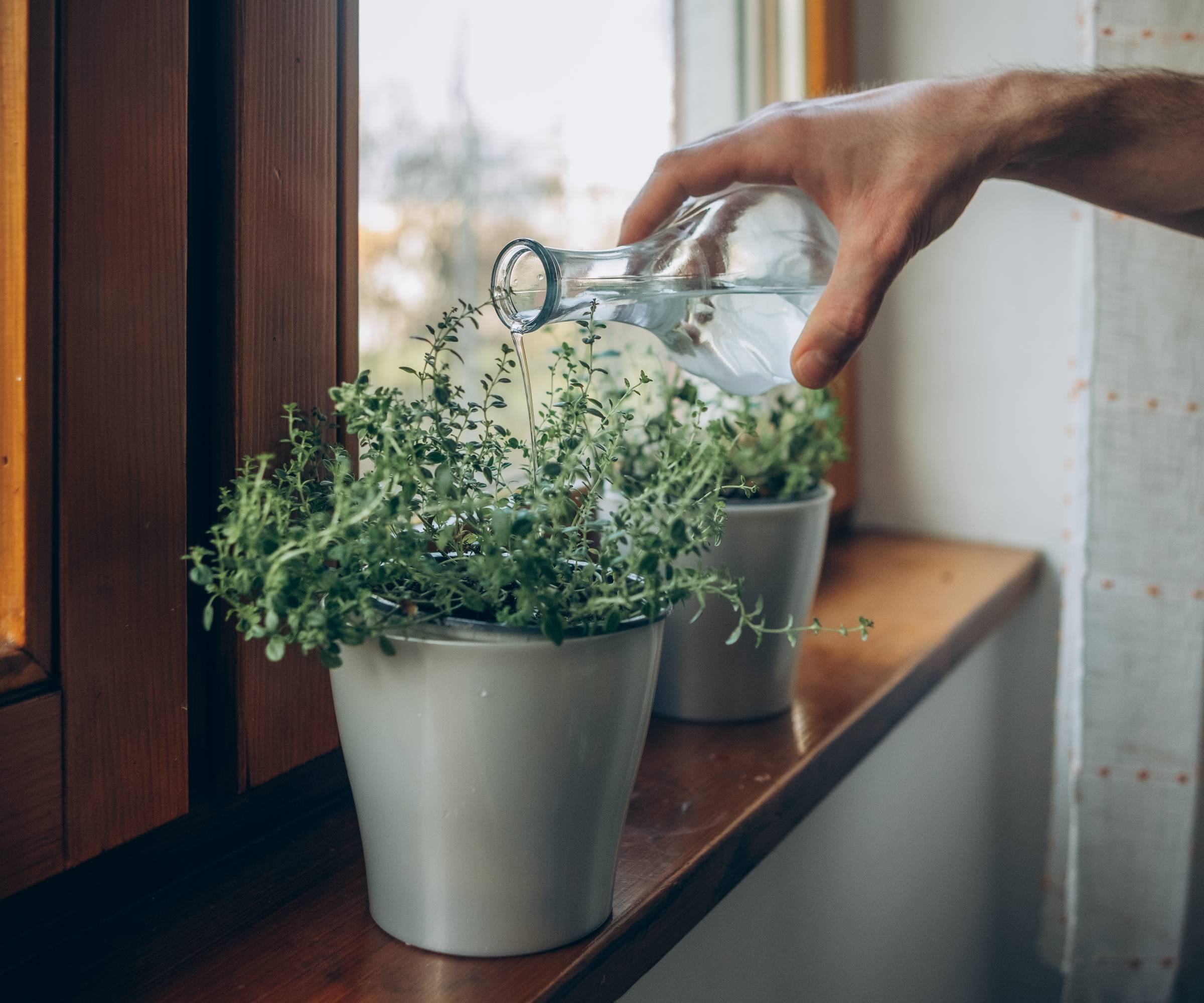
Once it’s established, thyme is one of the easiest, most forgiving herbs you can grow. There are, however, a few care practices that can keep it thriving (and tasting delicious) for years and years.
Watering Thyme
Thyme is remarkably drought-tolerant. So much so, in fact, that overwatering is the single most common problem it faces. If you’re growing thyme in a container, wait until the soil is completely dry several inches down before watering. If you’re growing it in the ground, you likely won’t have to water it at all, except in times of prolonged heat or drought.
Fertilizing Thyme
Forget the fertilizer. Thyme actually prefers poor soil, and too many nutrients will give its leaves a bland, boring flavor. If your plant is really struggling or sickly, try applying a single dose of compost or mild, balanced fertilizer, like this 10-10-10 variety from Amazon.
Mulching Thyme
Be careful with mulch, as it retains moisture and could keep your thyme too wet for its own good. You may want to apply a layer of mulch in the winter, especially the plant’s first winter in the ground, to protect it from cold damage.
Pruning Thyme
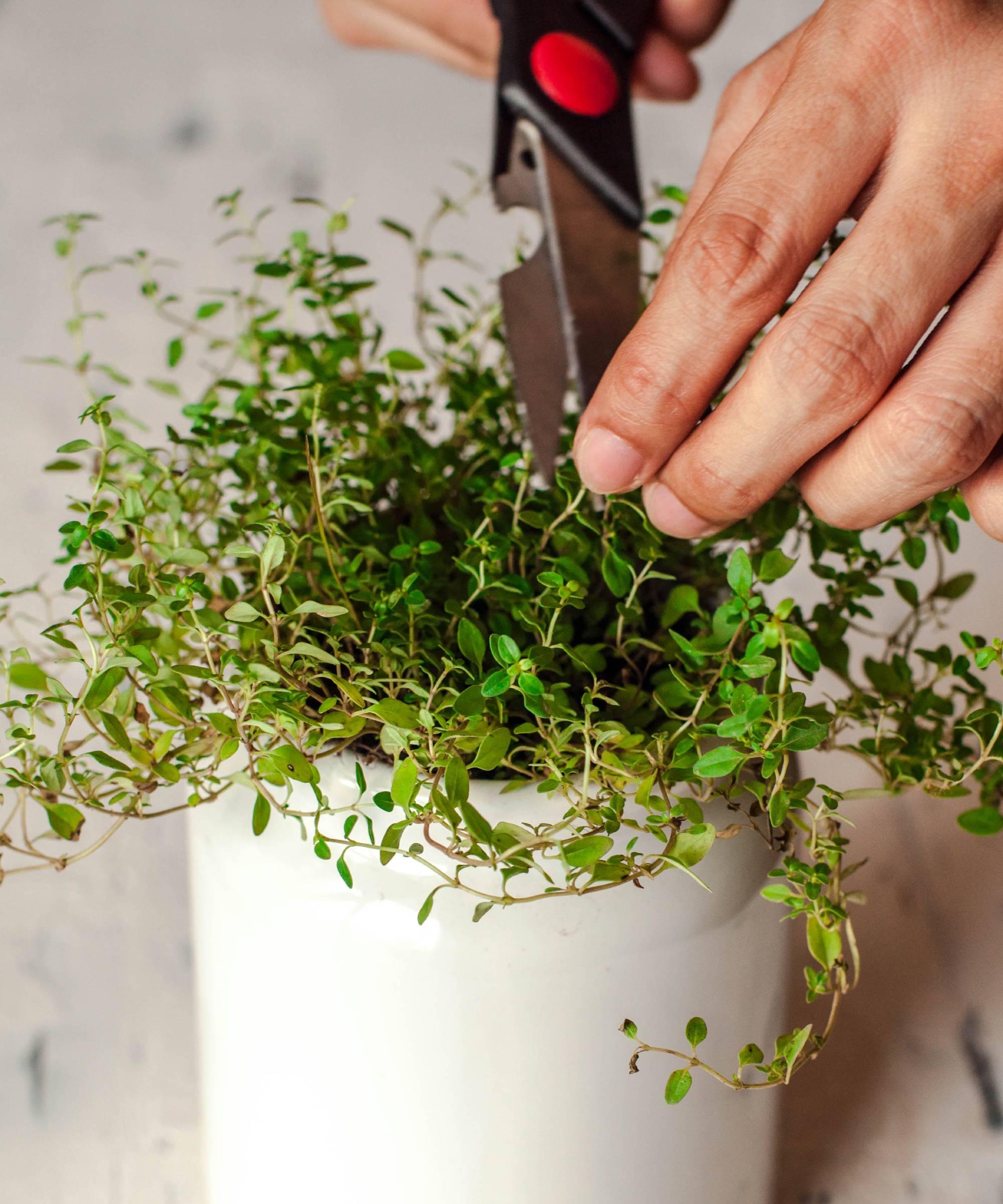
The bigger thyme gets, the woodier it gets. Unfortunately for us, those woody parts don’t produce the tasty, fragrant leaves thyme is known for. That means frequent pruning is essential to keep thyme fresh and producing new, leafy stems.
Prune thyme after its main spring blooming period. Never cut back into the old, brown, woody part of the stem, as new growth rarely comes from it. Instead, cut off about two-thirds of the current season's soft, green growth. This encourages fresh branching and keeps the plant from becoming leggy and spindly.
You can keep pruning thyme as much as you want throughout the summer, especially if you want to use it in cooking. Make sure you stop pruning six to eight weeks before the first frost, however. Any new growth produced after that mark could be damaged by the cold.
These Fiskars pruning shears from Amazon are a gardener favorite.
Thyme Care Calendar
| Row 0 - Cell 0 | Spring | Summer | Fall | Winter |
Plant | ✓ | Row 1 - Cell 2 | Row 1 - Cell 3 | Row 1 - Cell 4 |
Transplant | ✓ | Row 2 - Cell 2 | ✓ | Row 2 - Cell 4 |
Mulch | Row 3 - Cell 1 | Row 3 - Cell 2 | ✓ | Row 3 - Cell 4 |
Prune | ✓ | ✓ | Row 4 - Cell 3 | Row 4 - Cell 4 |
Propagate | ✓ | Row 5 - Cell 2 | Row 5 - Cell 3 | Row 5 - Cell 4 |
Harvest | ✓ | ✓ | ✓ | Row 6 - Cell 4 |
Thyme Varieties
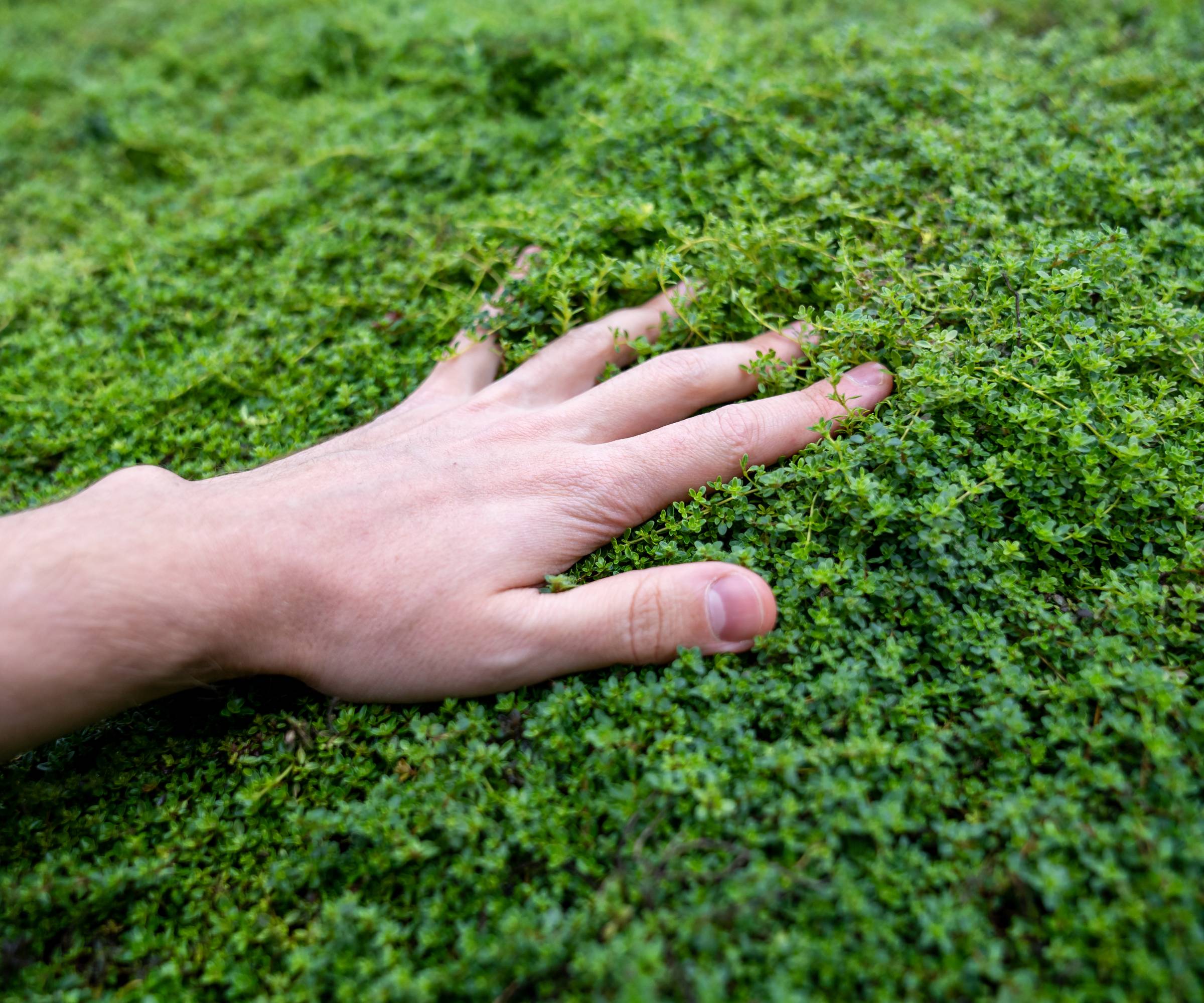
Thyme isn’t just one plant—it’s a diverse genus with over 300 species and cultivars! While common thyme (Thymus vulgaris) is the go-to for cooking, there are plenty of other types of thyme plants worth exploring. It all depends on whether your priority is cooking, groundcover, pollinators, or fragrance. Or even some of each!
Here are some of the most popular and useful varieties:
Thymus vulgaris (Common Thyme)
- Use: Culinary, medicinal
- Growth: Upright, 6-12 inches (15-30 cm)
- Flavor: Strong
- This is what you almost always find in the spice rack. It's ideal for roasting, soups, stews, and infused oils.
Thymus x citriodorus (Lemon Thyme)
- Use: Culinary, aromatic, ornamental
- Growth: Upright, 6-12 inches
- Flavor: Light citrus notes with a mild thyme base
- Yes, it really does smell like lemon! This variety is a favorite for both sweet and savory dishes.
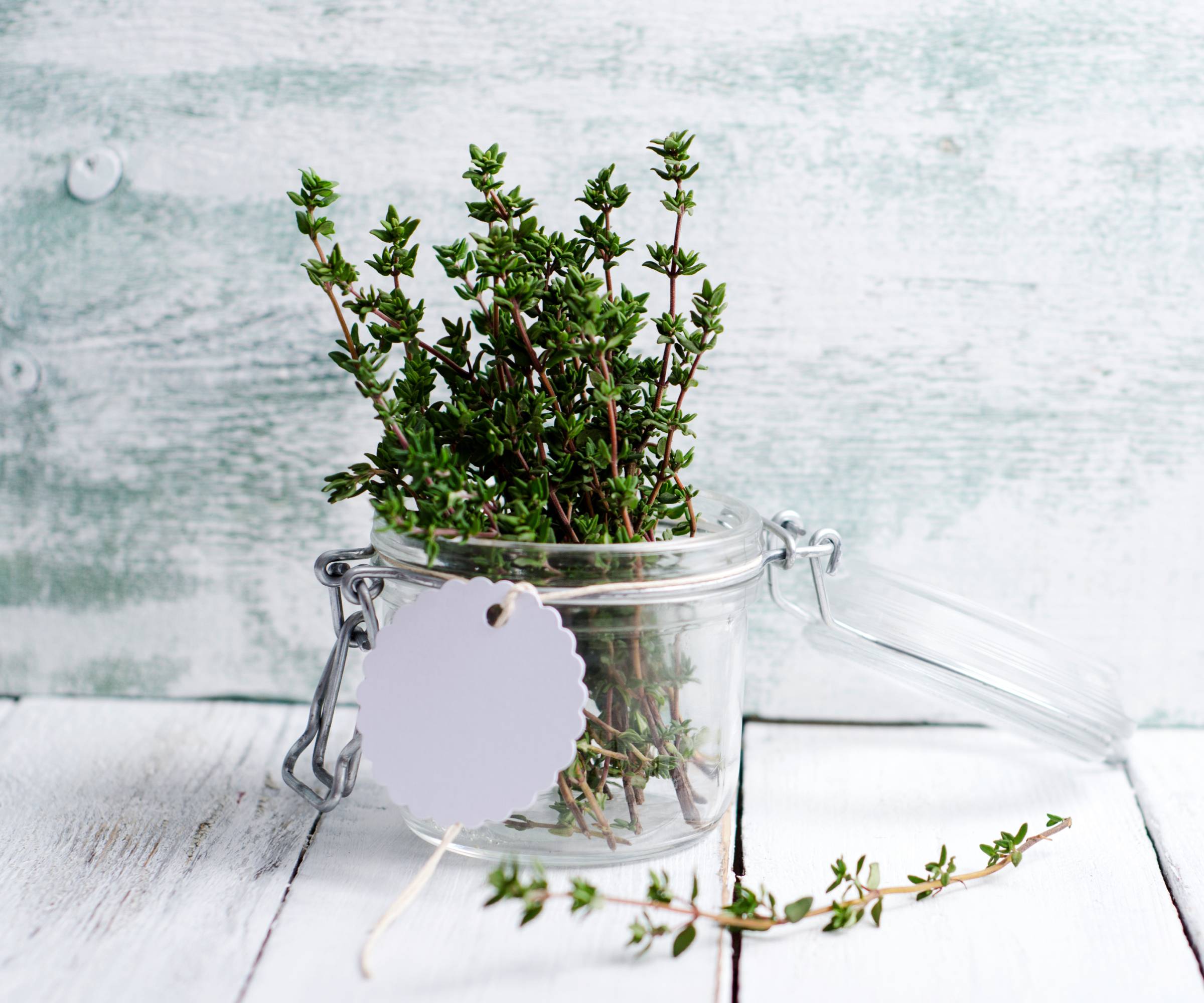
Thymus serpyllum (Creeping Thyme)
- Use: Groundcover, ornamental, pollinator-friendly
- Growth: Spreading, mat-forming, 1-3 inches tall
- Flavor: Mild, not usually eaten
- Ideal for rock gardens, between pavers, or as a lawn substitute. In summer it becomes a mass of flowers and a pollinator magnet.
Woolly Thyme (Thymus pseudolanuginosus)
- Use: Ornamental, groundcover
- Growth: Low-growing, very dense, 1-2 inches (2.5-5 cm) tall
- Flavor: Not recommended for culinary use
- Grown for its soft and fuzzy foliage, woolly thyme is more about texture than taste. It tolerates light foot traffic.
Caraway Thyme (Thymus herba-barona)
- Use: Culinary, ornamental
- Growth: Spreading, 3-6 inches tall
- Flavor: Distinct caraway scent
- Caraway thyme has a sharp, spicy aroma (think rye bread) that works well with rich meats and hearty dishes. It’s also an attractive groundcover with pink blooms.
Propagating Thyme
Running out of thyme? Don't worry – propagation is quick and easy.
Taking cuttings is far and away the easiest and most popular way to propagate thyme. It’s best done in the spring, when plants are putting out new growth.
How to Propagate Thyme from Cuttings
- Locate a non-flowering shoot that’s green (not woody).
- Cut the stem just below a leaf node, so it’s 3-5 inches (7.5-13 cm) long.
- Strip away the leaves from the lower half of the stem.
- Dip the cut end of the stem in rooting hormone.
- Plant the stem, cut side down, in a pot of moist, well-draining potting mix.
- Cover the pot with a plastic bag to retain moisture, but make sure there’s still airflow!
- Check for roots. It will take a few weeks.
- Transplant your rooted cutting to a larger container or outdoors.
How to Grow Thyme from Seed
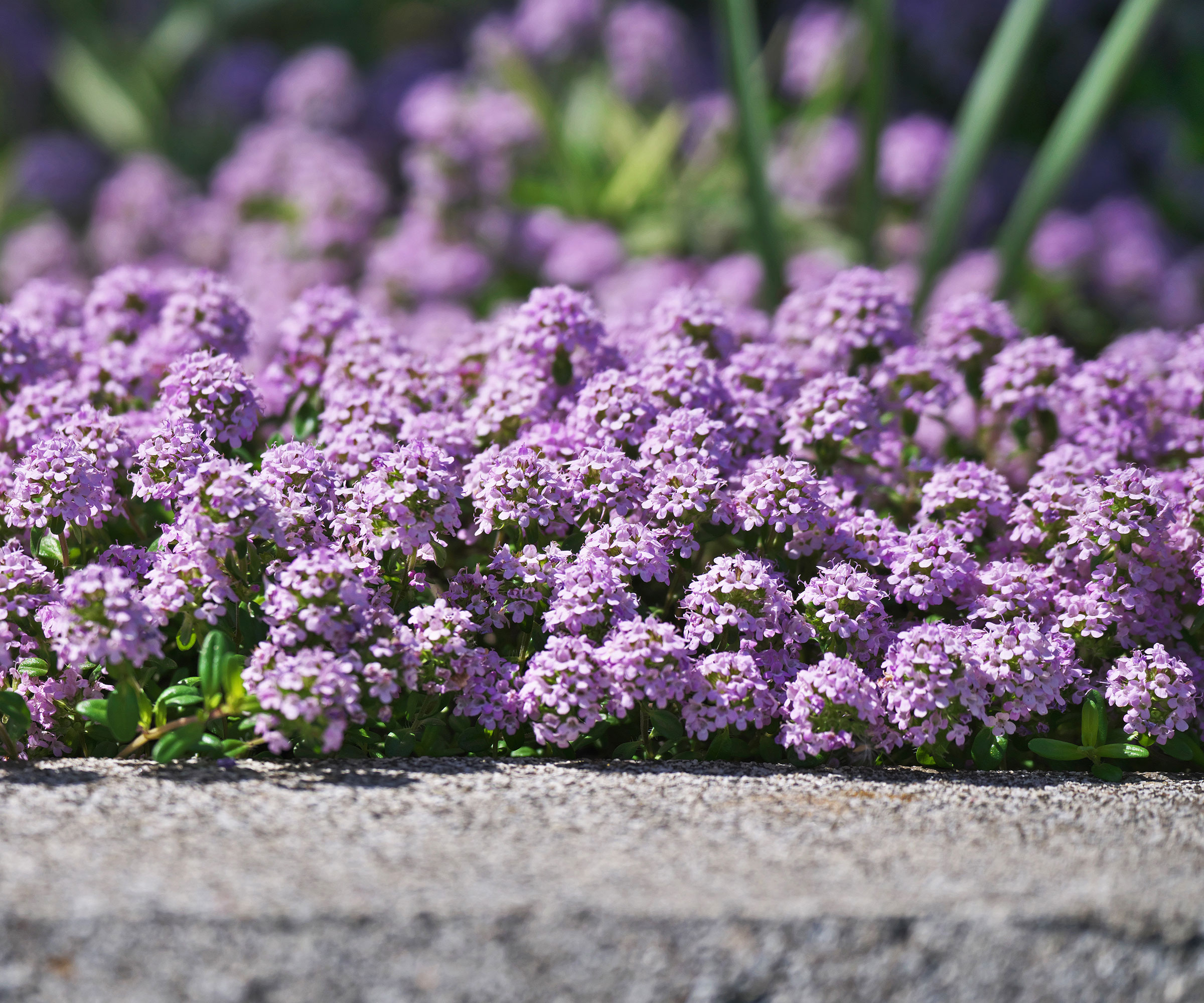
It is possible to grow thyme from seed, as the seed packets in any garden center can attest. Be aware, though, that it’s going to be a much longer process than taking cuttings.
- Start seeds indoors 6-8 weeks before your last expected frost.
- Scatter your seeds on the surface of moist, well draining medium. Don’t cover them!
- Mist your seeds lightly to keep them moist.
- Maintain temperatures between 65-75 F (18-24 C).
- Wait 2-3 weeks for germination. (Thyme germination is famously spotty).
- Transplant seedlings when they have 2-3 sets of true leaves.
- Space transplants 12 inches (30 cm) apart.
How to Divide Thyme
Division is another simple, rewarding way to propagate thyme. It’s best for creeping varieties, but it can be effective for any plant that’s able to be split into multiple parts each with its own root system.
- Start during cool weather, ideally early spring.
- Dig up the plant, keeping as much root mass intact as possible.
- Pull or cut the plant into sections, each with healthy roots and stems.
- Transplant the sections to their new locations immediately.
- Water lightly until the transplants are established.
Thyme Winter Care
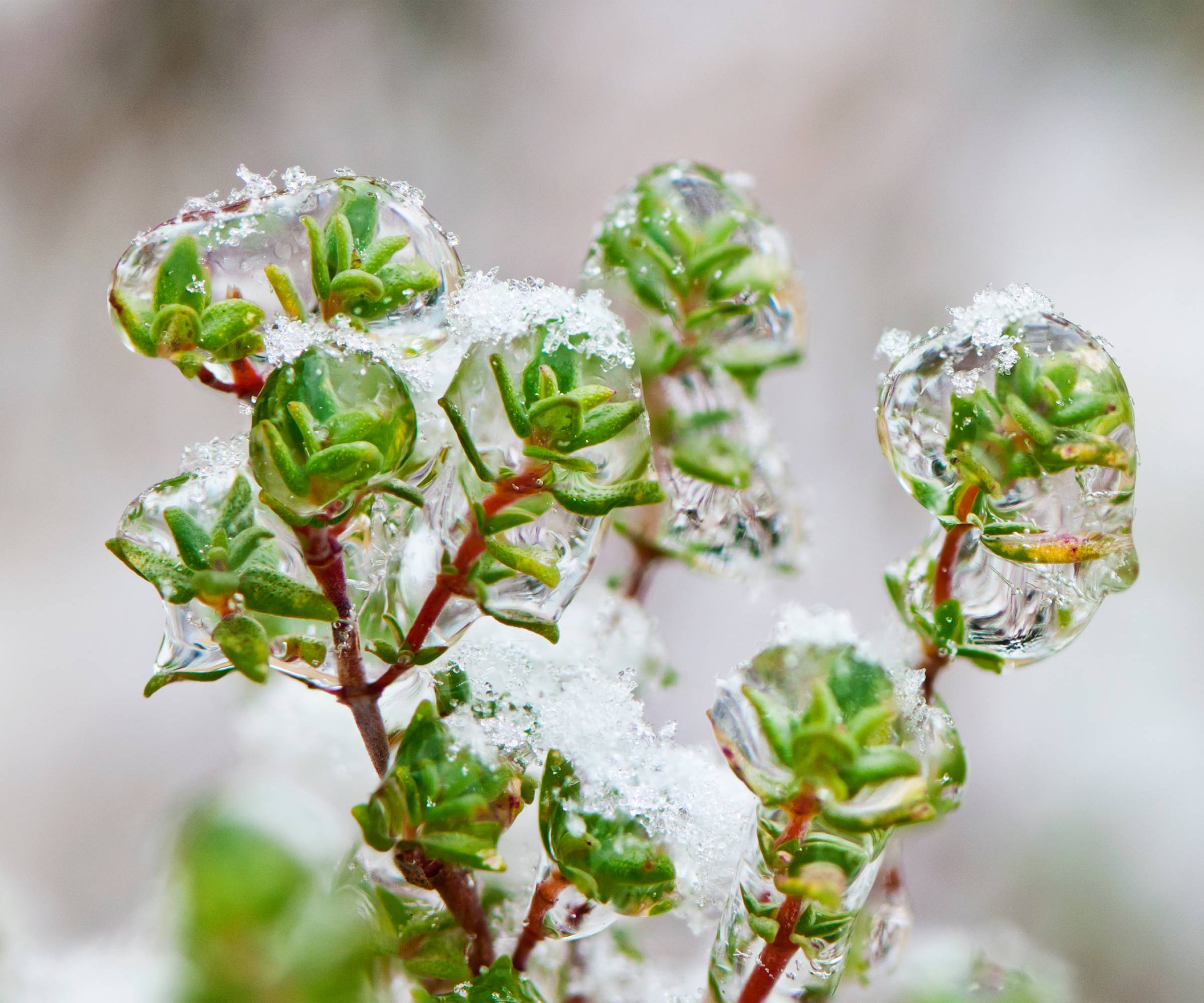
In mild climates, thyme can be grown as an evergreen with basically no care required. In colder gardens, apply a light mulch to protect roots but avoid excess moisture. If your thyme perishes in the cold, don’t lose hope! It’s possible for thyme to die back to the ground and return in the spring. Mark the plant’s spot, and keep an eye out for sprouts when temperatures rise.
Thyme Problems
Thyme, like a lot of fragrant herbs, tends to drive pests away and has few problems with them. Aphids and spider mites may show up, but can usually be driven away with a strong spray from a hose.
The source of almost all thyme problems is excess moisture – usually in the form of root rot or fungus. To avoid these problems, plant your thyme in well-draining soil, refrain from watering except in extreme drought, and space plants at least a foot (30 cm) apart to allow for good air circulation.
Growing Thyme in Containers
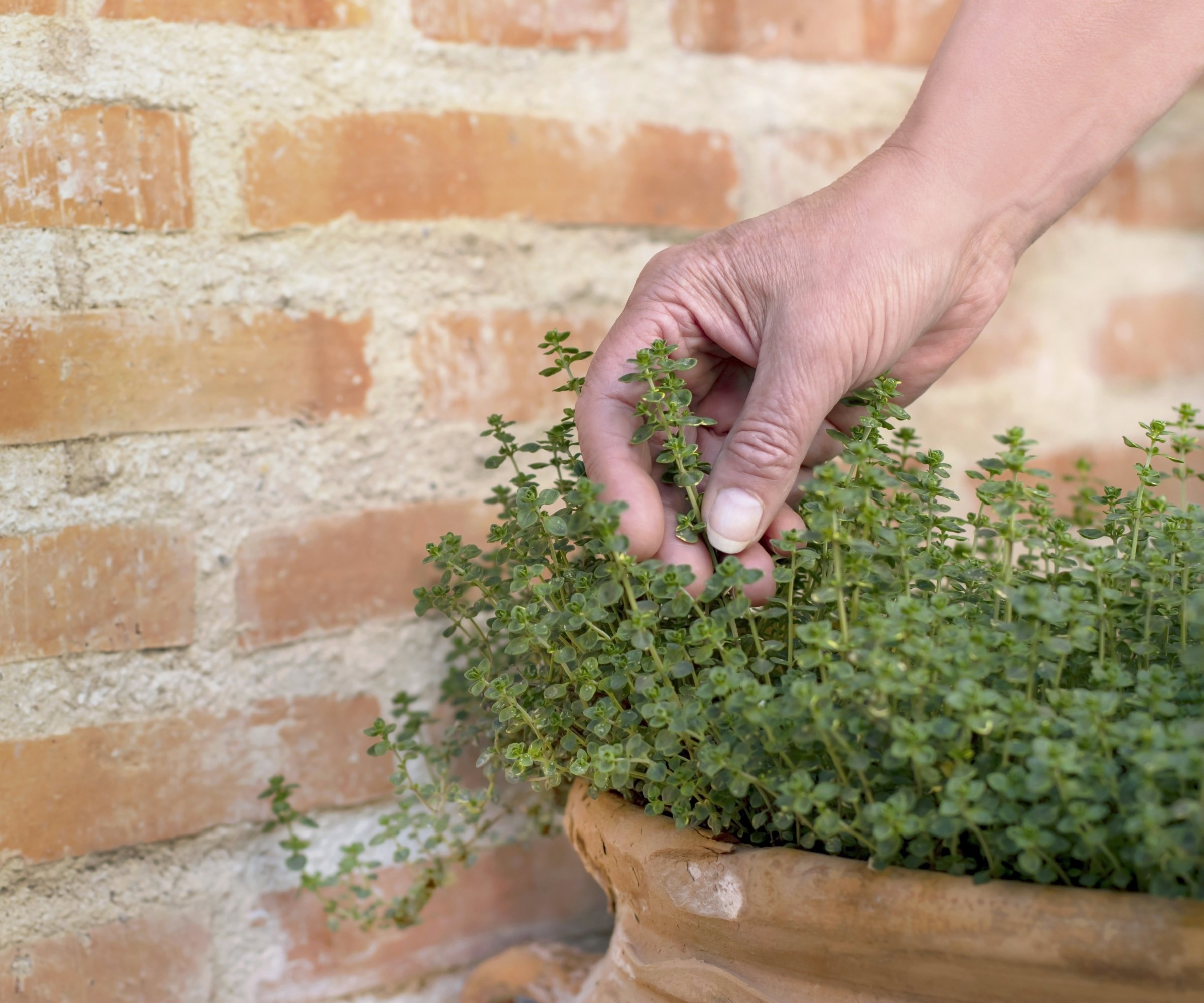
Thyme grows beautifully in containers, especially if you're short on space or have heavy clay soil. Follow all the same general thyme care instructions: Place your container in full sun, avoid fertilizer and over watering, and prune regularly.
Most importantly, ensure you have good drainage! Make sure there’s one (ideally several) holes in the bottom of your container to let water escape. If your container is in a saucer, empty it every time it gathers water. If the container is outdoors, just do away with the saucer altogether – otherwise you’ll be emptying it after every rainstorm.
Thyme Indoor Care
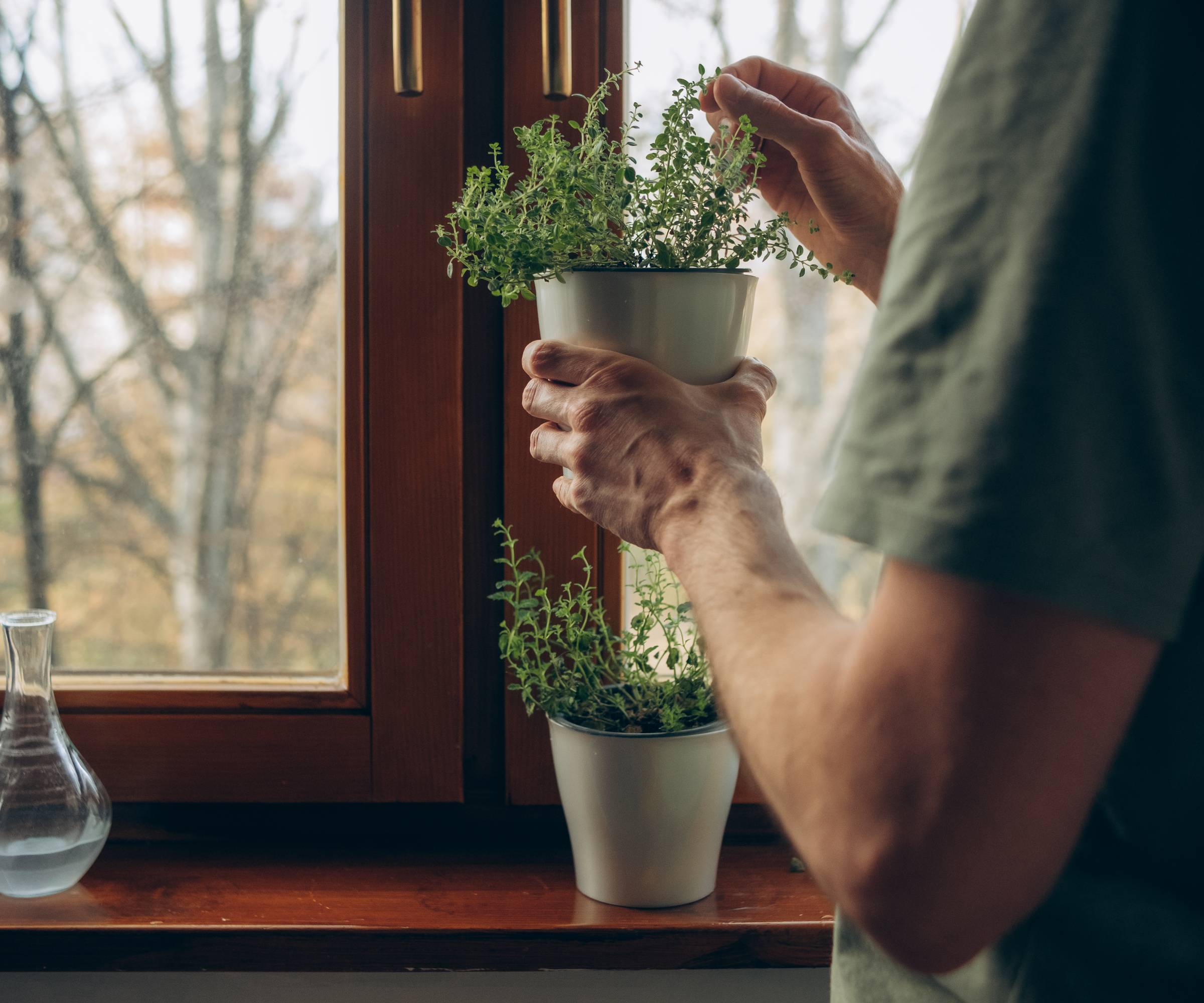
You can grow thyme indoors, especially over the winter, but it needs the right conditions to stay healthy and flavorful. The biggest challenges are light and airflow.
Thyme needs 6-8 hours of light per day, even in the winter. Without enough light it’ll grow leggy, lose its flavor, and become more susceptible to pests and disease. It may be okay in a south facing window, but it will fare much better under a grow light. (My potted thyme winters under a row of these grow lights I got on Amazon, along with all my other herbs.)
When plants are indoors it’s tempting to water them more, but try to resist. The number one cause of thyme death is the over-attentive waterer. Allow your thyme to dry out completely between waterings, and always empty its saucer.
Harvesting and Storing Thyme
Harvesting thyme not only provides you with a supply of fresh seasoning, but also acts as a natural pruning method, encouraging bushier growth.
Harvesting Thyme
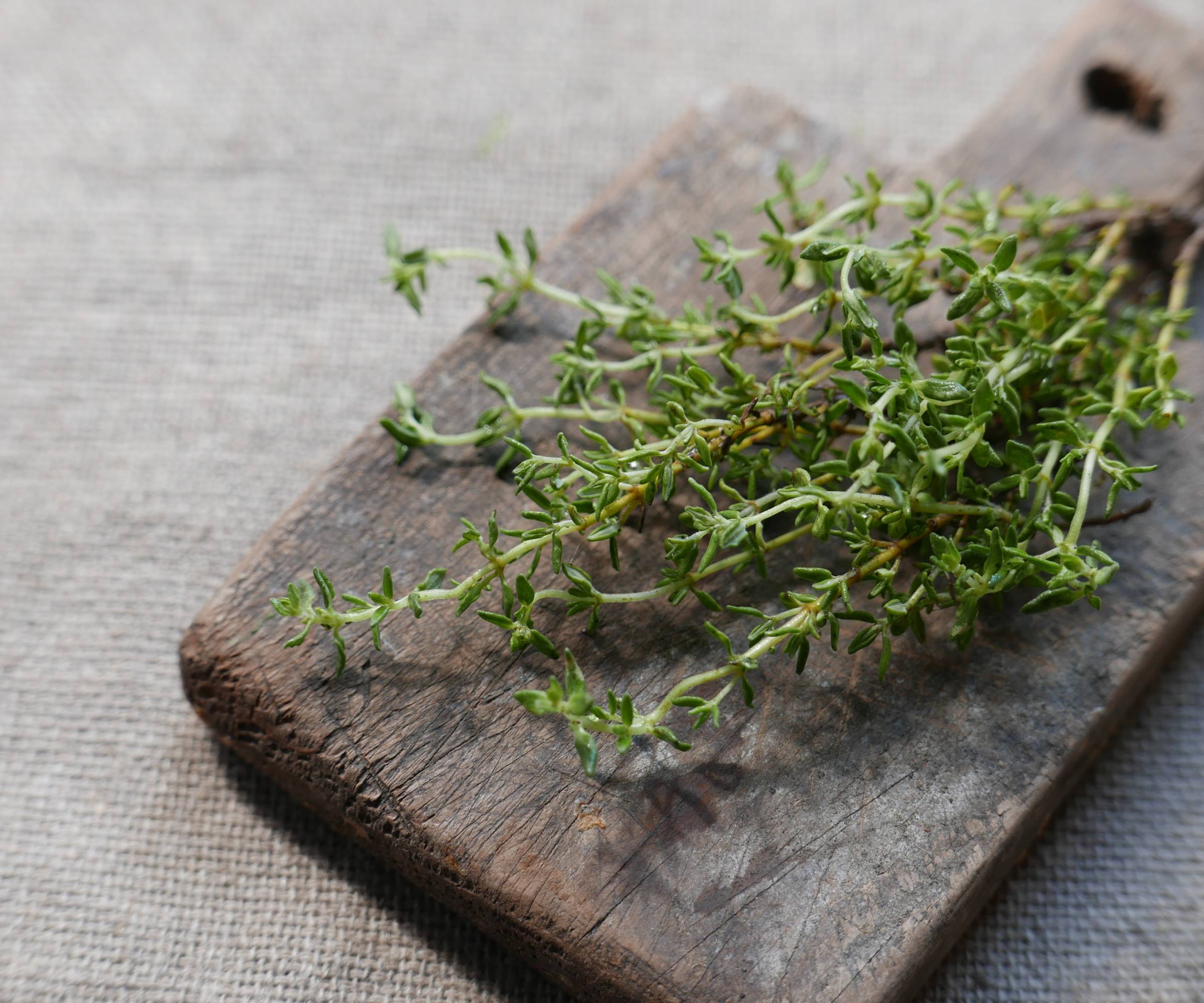
The best time to harvest thyme for peak flavor is just before it flowers (typically late spring or early summer). This is when the essential oils are at their highest concentration.
For fresh use, simply snip off a few sprigs as needed, making cuts just above a leaf node (where leaves emerge from the stem) to encourage new growth.
For drying or freezing, cut stems back by about one-third to one-half of their length. Make sure to stick to new, green growth – never cut into the thick, brown, woody base. Harvest on a dry, sunny morning after the dew has evaporated.
Storing Thyme
Thyme is one of the easiest herbs to preserve, retaining its flavor exceptionally well after drying.
- Drying: Gather the cut stems into small bundles and secure them with twine. Hang them upside-down in a warm, dark, well-ventilated area until the leaves are completely brittle (about one to two weeks). Once dry, strip the leaves from the stems and store them in an airtight container away from light and heat.
- Freezing: Chop fresh thyme leaves and mix them with a small amount of water or oil. Place the mixture into an ice cube tray, freeze, and then transfer the cubes to a freezer bag. This locks in the fresh flavor and is perfect for adding directly to stews and soups.
Thyme Companion Plants
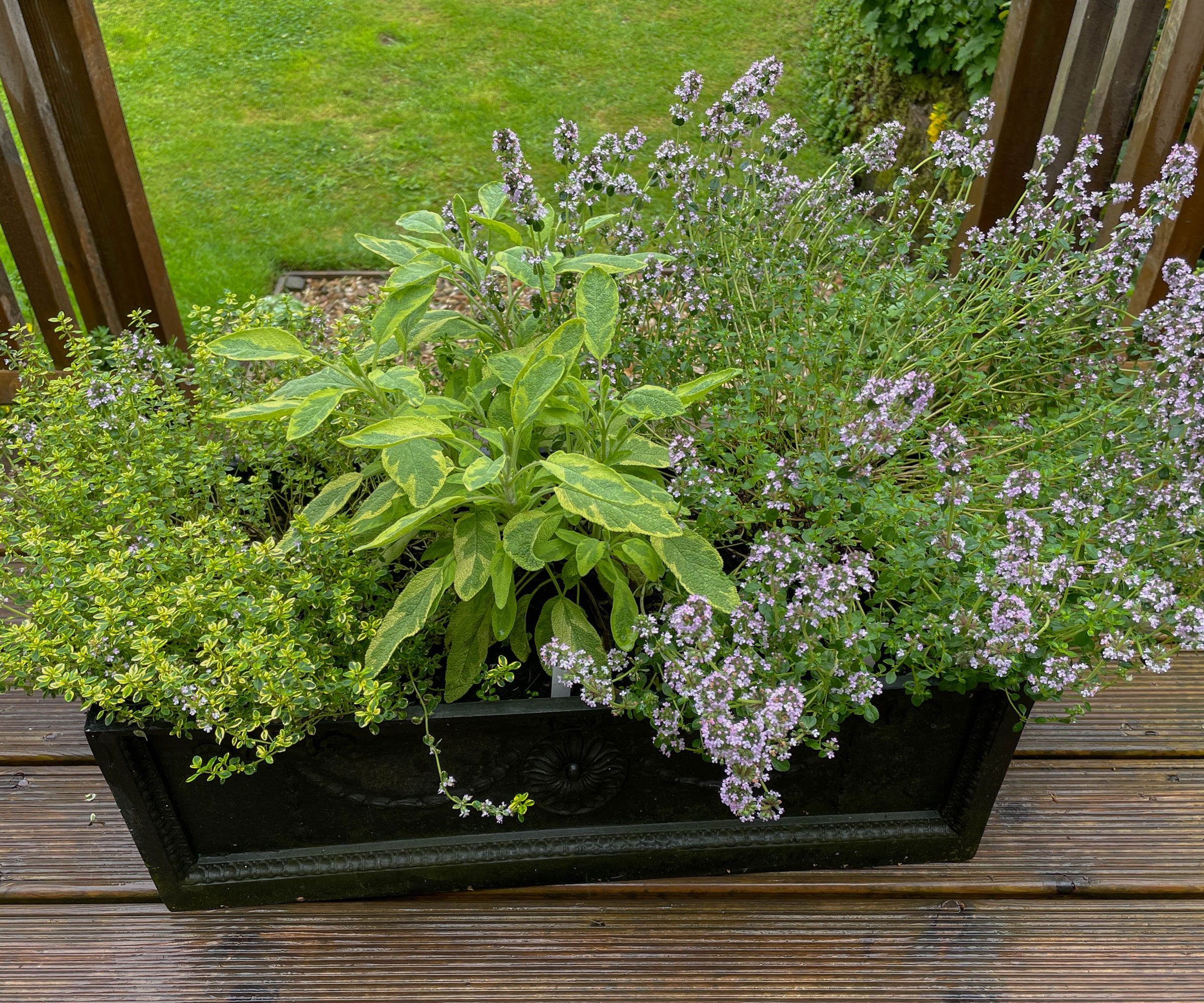
A natural pest deterrent and pollinator magnet, thyme is an ideal companion for basically any plant that shares its growth conditions. It has been shown to reduce pest infestations in cole crops and eggplants.
It also pairs very well with other herbs, like lavender and rosemary, that crave the same Mediterranean growing conditions and smell amazing.
Avoid growing thyme with plants that need rich, wet, or heavy soil. This will just lead to root rot.
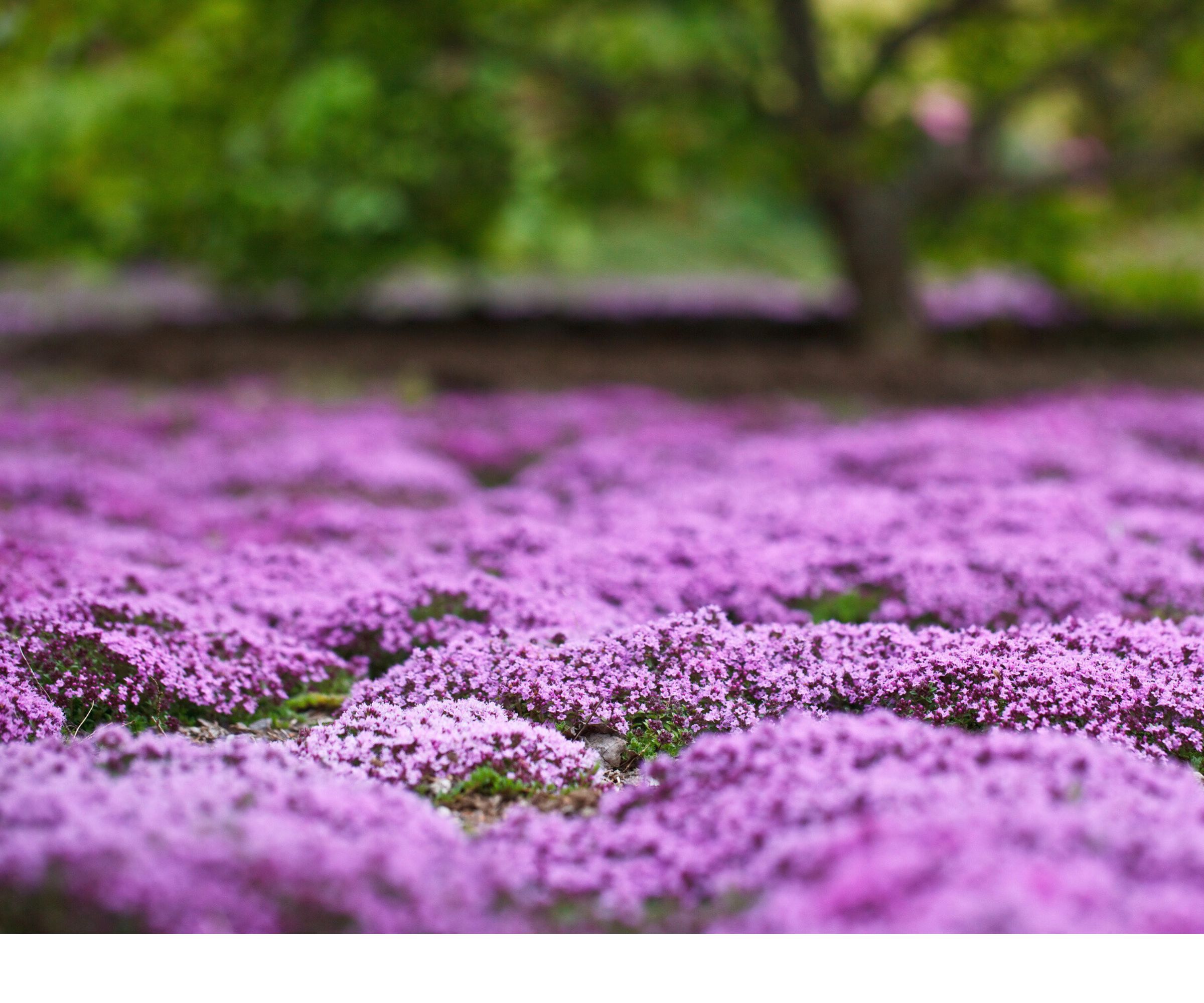
Thyme Growing Essentials
- Thyme loves poor soil – see how yours stacks up with the MySoil test kit, available on Amazon.
- Pruning is a must for healthy, flavorful thyme. Keep yours tidy with Fiskars pruning shears from Amazon.
- Don't let your thyme get soggy! Improve drainage with perlite, available at Home Depot.
- If you need to fertilize your thyme, keep it simple with a 10-10-10 fertilizer from Amazon.
- Keep thyme happy all winter long with a set of grow lights from Amazon.
Frequently Asked Questions
Can you eat thyme flowers?
Yes! Thyme flowers are edible and flavorful, with a milder version of the herb’s taste. They make an excellent garnish.
How do I keep thyme from getting woody?
Regular pruning helps! Cut your thyme back after flowering, and keep trimming it throughout the growing season to encourage fresh growth.
Quiz!

The only child of a horticulturist and an English teacher, Liz Baessler was destined to become a gardening editor. She has been with Gardening Know how since 2015, and a Senior Editor since 2020. She holds a BA in English from Brandeis University and an MA in English from the University of Geneva, Switzerland. After years of gardening in containers and community garden plots, she finally has a backyard of her own, which she is systematically filling with vegetables and flowers.